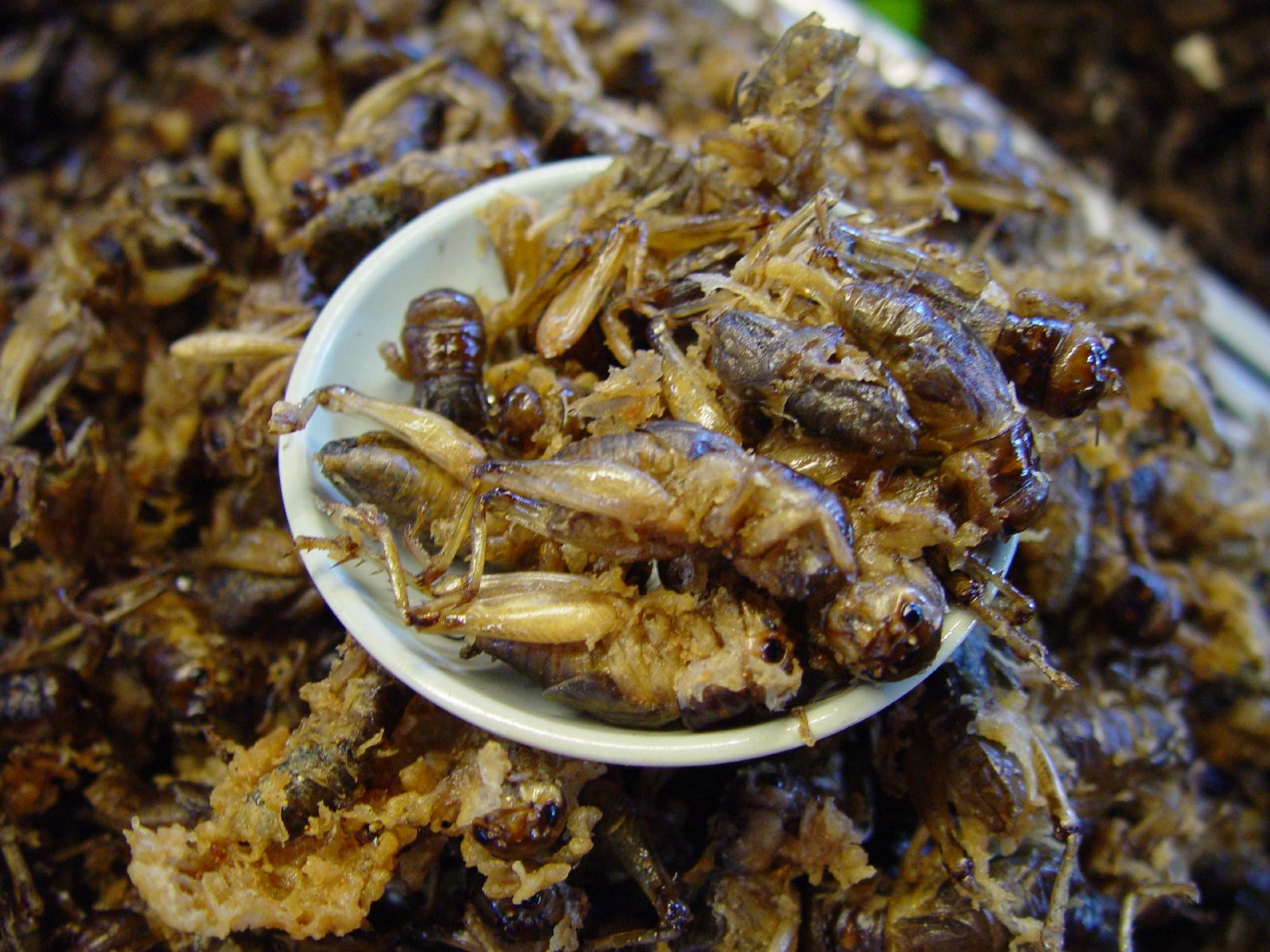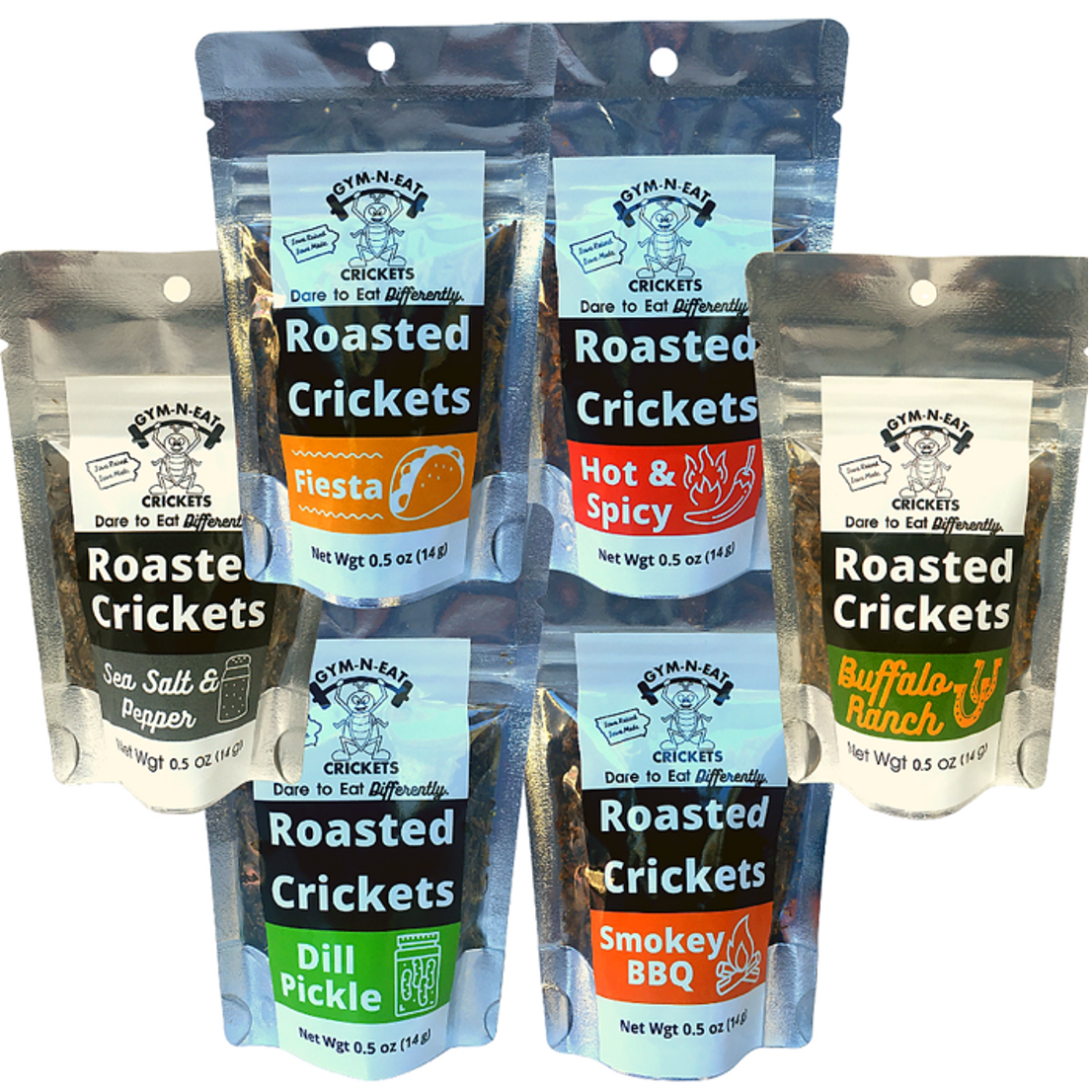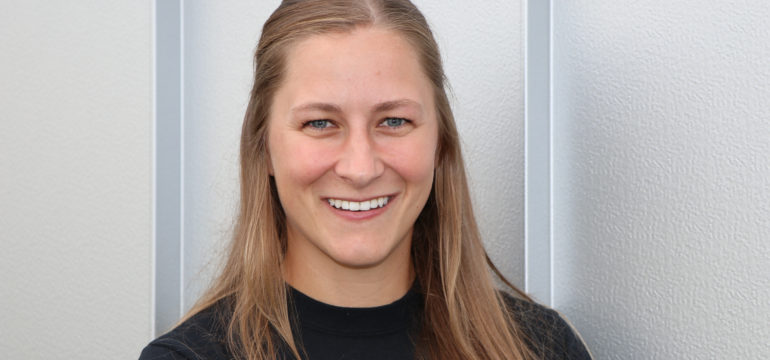By Karin Cho
Shelby Smith is the owner of Gym-N-Eat Crickets, a business focused on delivering the highest quality cricket products as a sustainable, alternative protein source. She is one of the popular guest speakers for the Iowa chapter of Phi Tau Sigma for her enthusiasm and transparency in discussing her journey to creating crispy, delicious cricket snacks.
Hello Shelby! Thank you for meeting with me today. Can you briefly introduce yourself and your cricket business?
S: I grew up on Ames, IA on a traditional corn and soybean farm, but I wanted nothing to do with agriculture. I was really good at basketball, so I ended up earning a full scholarship to play basketball in college out of Saint Joseph’s University (Philadelphia, PA), and later went overseas and played in Ireland. I have an undergraduate and Master’s degree in finance. I found finance really unsatisfying for me, so I quit after about three and a half years and moved back to the family farm outside of Ames and started farming with my dad. He encouraged me to look at other niche markets in agriculture so that I wouldn’t do what he has done for over 30 years and also to not fight the same markets that he has fought. I was an avid podcast listener, and eating bugs, or entomophagy, came up on three different podcasts in the same month. So after thinking about it for a few weeks, I sent an article to my parents about a woman raising crickets for human consumption. Ten days later, I bought my first 10,000 crickets and started from there.

S: The initial intention was to raise crickets for people already producing products so I wouldn’t be in the processing side of actually turning the crickets into consumer ready products. At the time, I couldn’t get anyone to have a solid conversation with me on how many they would need and what price they would need to be at. I think I am a pretty good cook and have decent taste buds, so I decided I can try to make products out of crickets and see what happens. I started selling them at the local Ames Farmers’ Market because the barrier to entry, in terms of licensing and requirements was quite low, so it was a low-risk way to see if I could get anyone to eat insects. That went better than I ever thought. I ended up expanding my cricket growing facility and ended up buying a building and putting in a licensed food processing facility and becoming a preventative controls qualified individual so I could write all of my own FSMA (Food Safety Modernization Act) compliant food safety plans. It has really been a crash course of learning on the fly, product formulation, product testing, flavor testing. Not everything works, but some things do.
You mentioned that you decided to get into edible insects market after hearing several podcasts. Did you eat any crickets before you decided to go into the cricket business?
S: The honest answer is I ordered my first cricket snacks before I ordered my live crickets, but because I had to overnight my live crickets, they made it to me before my cricket snacks did. Technically, I was already raising the crickets for about a day before I had even eaten my first cricket. So I say it was a leap of faith.
Can you describe some of the challenges you encountered for raising crickets and what resources did you use to help you?
S: There was not a manual on how to raise crickets for human consumption when I started.. There are other parts in the world that have farmed crickets for many years, but here in North America, it is a new process. In terms of resources, I learned the basics of how to raise crickets from Youtube videos by people who own lizards. As for scaling up, there’re really no resources. Research is being done in real time, and many of us are still figuring it out as we go.

Thailand deep fried crickets. Source: https://flic.kr/p/61xjD
I am friends with some other people who farm crickets. The knowledge and information that gets shared varies because some have chosen to go on the venture capital route. They have raised funds under the conditions that they will eventually patent some of their processes and technologies. Even if they have a massive breakthrough that would revolutionize the industry, until they get it protected under a patent, they will not share it. It’s a very interesting dynamic.
I come at it from an entirely different part of the spectrum, where I will tell you everything I know. I will give it all away for free on Youtube. Do what you want with it, but the caveat is that I am not the expert. I do not know everything, so if you try something and see it does not work, please share that with me. That feedback is super helpful for me. It leads to new ideas and processes I have never tried. It also reminds me that not all environments are the same when rearing crickets, so something that works for me may not work for somebody else.
I started my Youtube channel in March 2020 during COVID. I had some extra time to start my channel. My overarching goal for this channel has been more on the raising crickets side because I want to provide the resources that I didn’t have when I started. I can hopefully help others. I am not naïve to think that I can build the entire industry on my back, so I need other growers too. We can hopefully create a robust enough supply chain to give momentum to the cricket market.
Is there a convention or conference that you attend to meet other insect producers?
S: There is not an entomophagy specific event, but there is a group called the North American Coalition for Insect Agriculture (NACIA). It is essentially a trade association for all sorts of different insect agriculture. It is not only crickets that are raised commercially. There are insects such as black soldier fly larvae, yellow mealworms, scorpions, grasshoppers, ants—there’s a wider variety of insects that are raised or foraged across the world that go into all sorts of cuisines. The big ones in North America are mealworms, crickets, and black soldier fly larvae.

Chapulines (Grasshopper) on guacamole. Source: https://flic.kr/p/2tA6ss
Considering that some of these insects are raised for feed, how did you decide whether you wanted to grow crickets for feed or human consumption?
S: From a regulatory burden and regulatory hurdle standpoint, particularly in Iowa, getting my crickets, or any other insect that isn’t black soldier fly larvae at this point, into an animal feed is way more difficult than for human consumption. The licensing requirements are more difficult. Being in a big Ag heavy state, they are very stringent on the rules of what goes into feed. We have a lot of livestock, there is a custody of care that we need to be concerned with. The Iowa Department of Agriculture defaults to the allowable feed ingredients set by the Association of American Feed Control Officials (AAFCO). AAFCO has not signed off on crickets being GRAS for feed, both livestock and companion animals. We don’t have official studies on crickets in animal feed, so AAFCO cannot approve of crickets in feed. Black soldier fly larvae have already gone through this process and have been approved by AAFCO. Because of this approval, it opened doors for the larvae to be legal in the feed market, which attracts more venture capital and investment, leading to the huge growth of this industry in comparison to crickets. Black soldier fly larvae can also eat a lot cheaper than crickets can because the larvae will eat food waste but crickets will not—they are fairly picky.
Can you share some of the aspects you enjoy or found surprising as you were learning to raise crickets?
S: I think the big contrast for me, shifting from finance back to agriculture, is the tangible results of your efforts. In finance, it is the big amount of money going from one bucket to another, and yes, the money exists, but is there physically this large of a pile of money? There’s something about hatching a baby cricket, feeding it, watering it, and taking care of it, and growing it into something that is tangible and that you can eat and gives your body nourishment. It has been nice to go back into creating a tangible product. In the finance industry, you can argue that the production of capital, the use of capital, and the expansion of capital allows somebody to start a business. Being in the finance world, you stay in the non-tangible side as you create value, whereas I am creating a physical product. There’s just something satisfying about that.

Roasted crickets variety pack. Source: gymneatcrickets.com
On your online and in-person store, there are several kinds of cricket products. Do you have any plans for how you will expand your cricket products in the future?
S: For my brand, it’s important to use clean, wholefood ingredients –stuff that I would really want to eat. It’s the basis of my brand. I would love to do a cricket cracker or cricket crisp. Something that is savory, snackable, meets my standards of using high quality ingredients, and can be produced without a state of the arts facility. Having bootstrapped this entire business, I’m very cost conscious of any R&D product development. Products that would need a massive extruder would not be realistic for me at this moment in time. I believe I will always have a hand in a portion of the manufacturing because I don’t think that anyone really wants to become a cricket processor. I think I will always have a hand in getting from a raw agricultural product to a food ingredient. In terms of using a co-packer for my bars, I see that happening in the next 12-18 months. I think that the cricket powder will always remain under my control because of the reality of the small cricket industry right now.
Thank you for your responses! For the last question, based on your career experience, what is one advice you would like to share with students interested in entomophagy or potentially starting their own cricket business?
S: I would say that perfect is the enemy of done. You are better off getting out early with a product before your branding, packaging, and even recipe is perfect because your business is built in the real world and not the lab. Something might seem really great in the lab and on paper, but you get in front of people and start interacting with them, and you may get something unexpected. You have a picture in your mind of what the target market is going to be, but in reality you may not get the response that you expected. Go get real world, tangible feedback in the lowest barrier that you can. And the other thing I would say is don’t trust your friends and family. They are going to be in your corner no matter what, and more objectively, they are probably not your target market.
Thank you so much for sharing your experiences with us today!
You can read more about her story and cricket products on www.gymneatcrickets.com. If you are interested in learning more about Shelby’s crickets, contact her at gymneatcrickets@gmail.com. For more details on how to raise your own crickets, check out her Youtube channel: https://www.youtube.com/c/ShelbySmithCrickets/. One of our authors, Cassandra Maya, also wrote a post recently on entomophagy, so be sure to check it out!
 Karin Cho | Linkedin
Karin Cho | Linkedin
SMF Blog Writer
Karin earned her B.A. in Biochemistry from Grinnell College, and during her time there, she was unsure how to merge her two passions for science and food. After attending several IFT events and completing a QA internship abroad, she decided to pursue a Master’s in Food Science and Technology from Iowa State University. Her research involves the development of fat alternatives. Growing up in a Chinese-Japanese household, she developed a palate for tasting new, sometimes bizarre, foods. When she’s not learning about food science, she enjoys watching science fiction movies, taking walks in parks, and learning new recipes from the people she meets during her travels.






Friggin’ brilliant!! Go girrrlllll!!!
-Coach V